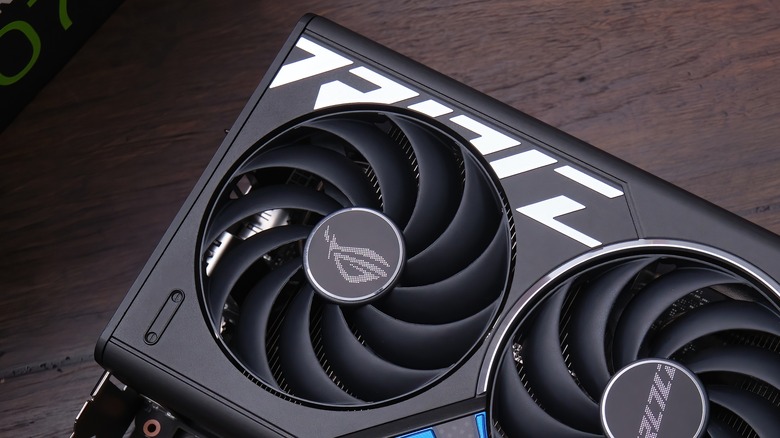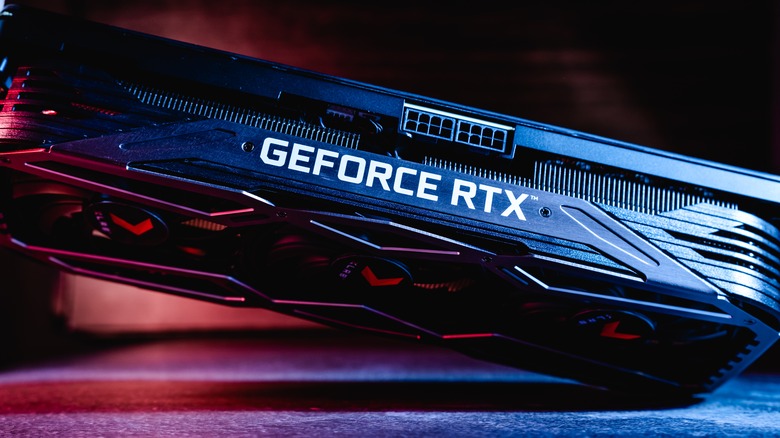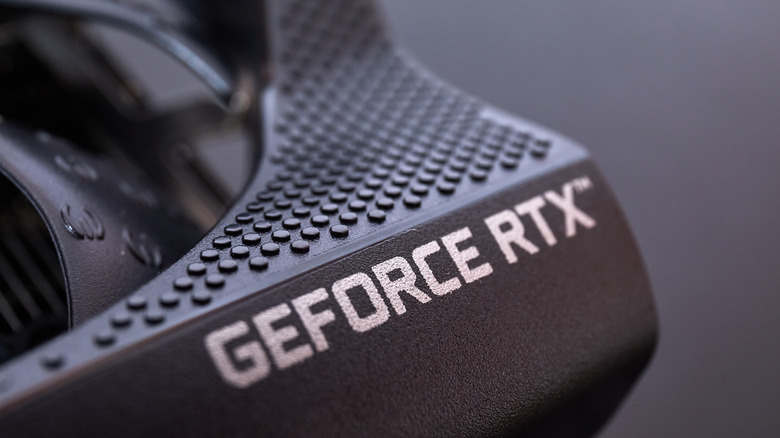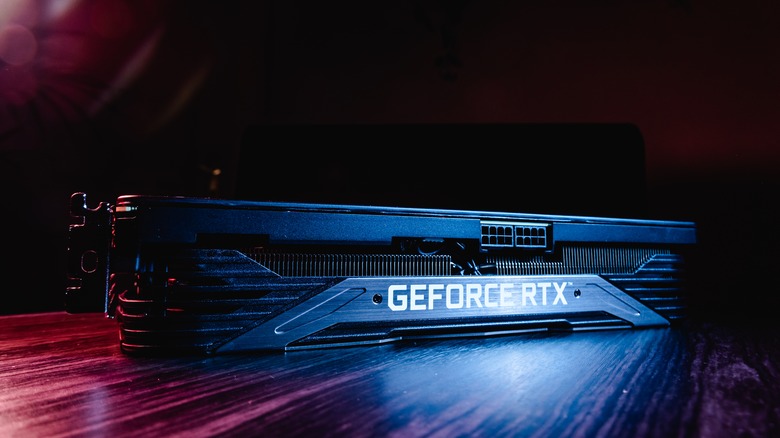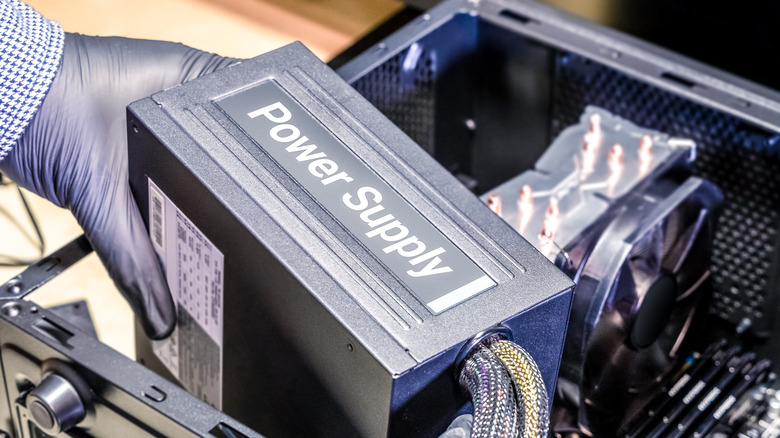What Power Supply Do You Need For RTX 40 Series Graphics Cards?
Nvidia's latest graphics cards are here, but are you ready for the upgrade? Readying your wallet is one thing because they all cost a pretty penny, but there's also an added cost that many of us overlook — buying a new power supply unit (PSU). Can you upgrade your PC right away, or do you need to spend more money on a better PSU? Let's find out.
The Nvidia GeForce RTX 40 series, which utilizes the Ada Lovelace architecture, contains some of Nvidia's most powerful graphics processing units (GPUs). With high-end models such as the RTX 4090 and the RTX 4080 alongside more midrange offerings along the lines of the RTX 4070 and the RTX 4060, there's plenty for gamers to get excited about — but upgrades aren't always straightforward. Swapping your GPU often means ponying up for various other hardware upgrades.
In the case of Nvidia's RTX 40 series, there are a few things to consider before you shell out your hard-earned cash on a brand-new graphics card. We'll explore them below and help you choose the power supply that suits your particular setup.
PSU recommendations for RTX 40 series
Nvidia issues official recommendations for power supply wattage for each of its graphics cards, although these recommendations technically only apply to its own Founders Edition graphics cards. Thankfully, Nvidia's board partners usually follow them. Still, if you're buying a card made by another GPU maker, such as MSI or Gigabyte, make sure to check that the recommended PSU is the same as listed below.
For the RTX 4090, which has a 450W total graphics power (TGP) that can go up to 600W at maximum, Nvidia recommends at least an 850W power supply. Depending on the rest of your rig, it might even be safer to buy a better PSU, though — if you're using one of Intel's or AMD's best processors alongside a bunch of other high-end components, you can even buy a 1000W PSU to leave some breathing room. Most PC builders will recommend Gold or Platinum PSUs at this stage, and ATX 3.0 should be the standard to follow at this point.
Moving on to the RTX 4080, which has a much more conservative 320W TGP, the recommended PSU drops to 750W. Once again, it might be better to leave some extra room here, especially if you're looking to overclock.
The RTX 4070 Ti has a 285W TGP and calls for a 700W power supply, while the RTX 4070 settles for 600W. Realistically, however, if you can afford to buy a new PSU, it might be worth it to aim for 700W instead of 600W.
12VHPWR controversy
Nvidia's RTX 40 series has received praise for its high-performance uplift and extra features, such as DLSS 3. However, nothing is perfect, and Nvidia wasn't able to avoid controversy with its best GPU, the RTX 4090, concerning its new power connector — the 12VHPWR.
Nvidia equipped its latest GPUs with the ATX 3.0 PSU standard, adding the PCIe 5.0 12VHPWR connector that joins the GPU and the power supply. This 16-pin connector offers a huge bump over the usual six- or eight-pin layout. This design change was necessary to accommodate the RTX 4090, which, in theory, can go all the way up to 600W of power consumption at peak.
Unfortunately, the 12VHPWR connector is rather unforgiving regarding its installation. Due to the sheer size of the RTX 4090 and the corresponding power cable, many users may find the GPU difficult to connect, causing them to bend the cable during installation. Regardless of the bending, users may also wrongly assume that the cable is properly seated when it isn't, causing an improper connection.
Some unlucky RTX 4090 owners on Reddit have reported a burnt connector, both on the PSU side and the graphics card side. While this is an extremely rare occurrence, it's still a problem that's best avoided. To avoid damage to your 12VHPWR connector, make sure that you're plugging it all the way in until you hear a click.
Things to consider before upgrading to RTX 40
Other than the power supply, there are a few more considerations to keep in mind before you swap to a new RTX 40 series GPU which will vary depending on the model. For instance, the beastly RTX 4090 will require a lot more out of your PC than the smaller RTX 4070.
Start by checking how big your new GPU is going to be. Nvidia's RTX 4090 uses three to four slots, depending on the exact type of card — the Founders Edition uses fewer slots than some of the overclocked models from Nvidia's board partners. The RTX 4080 also uses three slots, but the Founders Edition RTX 4070 Ti and RTX 4070 only require two. This affects both how much space you have on your motherboard and how roomy your case is.
For a big GPU like the RTX 4090, the graphics card may not even fit in your chassis. In addition, there's also the added issue of the 12VHPWR power connector that we described above. Bending the connector might result in improper mating and could even damage your GPU.
Another thing to consider is the cooling. A midrange card like the RTX 4070 doesn't generate that much heat, but if you're upgrading from an older model, it's still going to generate more heat than your old GPU. A few strong fans in the case will go a long way in making sure everything's running smoothly. However, the high-end models can heat up quite a lot. For the RTX 4090, consider swapping to a liquid cooling setup.
Do you need to upgrade to ATX 3.0?
If you're buying a new PSU anyway, should you get an ATX 3.0 model? Yes, definitely. ATX 3.0 adds a host of benefits, such as support for higher wattages and the ability to handle power surges reaching as high as 1,800W. It also makes your system quicker to wake up.
That said, if you already have a PSU that delivers the appropriate wattage, you most likely don't need to buy a new PSU just to upgrade to an ATX 3.0 model. Instead, the next time you do have to buy a power supply anyway, make sure to buy an ATX 3.0 instead of the older standard. Nvidia's latest GPUs come with adapters that make them compatible with older power supply units, so that won't be a problem — you'll still be able to use your new GPU.
Keep in mind, however, that the PSU is the one component in your PC that you should never try to save money on. If you're upgrading anyway, buy a solid model from a reputable brand, such as EVGA, Corsair, Cooler Master, Seasonic, or Be Quiet!
